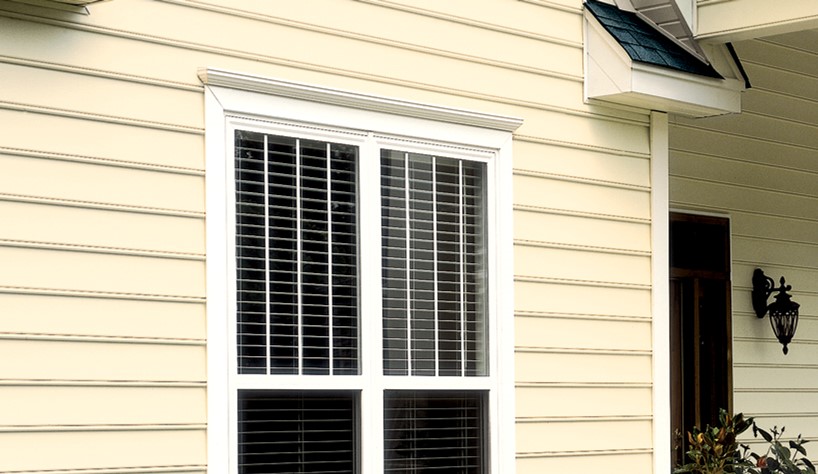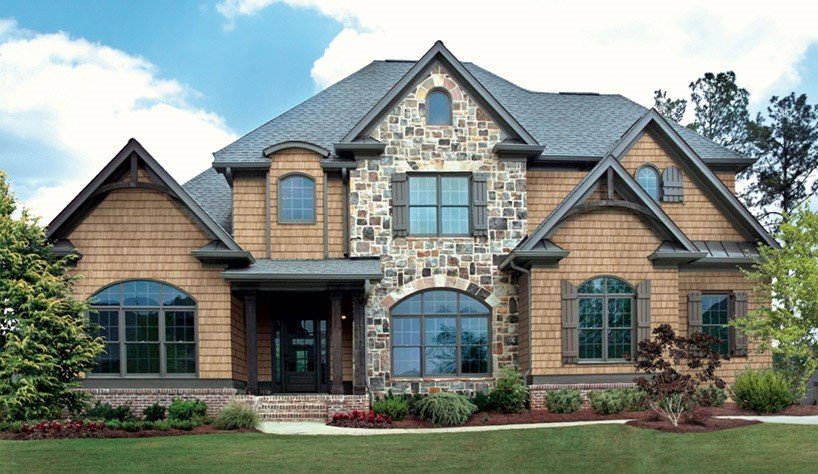- Home
- Helpful-siding-tips
Helpful Siding Tips
Here are some great helpfull siding tips on choosing and buying siding. Our website was designed by old home improvement contractors who want to share with you their siding experiences and knowledge over the years. We can help you pick the best home siding material and the absolute best contractor.
Choosing the right house siding is more than color and texture. It’s about crafting a resilient, efficient, low-maintenance exterior that refreshes your home’s curb appeal and stands strong for decades.
Do Your Homework
Before you get any quotes from contractors, you need to review and compare the many different types of house sidings.
You need to choose the siding that bests fits your neighborhood, weather conditions, budget and other items.
All house siding has it's advantages and disadvantages. Zeroing in on your specific needs and wants willl make shopping much easier.
Knowing what you want before you call the contractor is like knowing what kind of new car you want and then going to the dealer to see colors and add-ons.
Why Research Before Calling a Contractor
Why Research Before Calling a Contractor
- Understanding materials, styles, and price ranges empowers you to vet quotes and avoid being upsold.
- Familiarity with styles and textures (lap boards, shakes, board & batten) and color palettes helps you articulate your vision clearly.
- Knowing installation nuances (weight, cutting methods) lets you ensure your contractor has the right equipment and expertise.
Frequently Asked Questions
Frequently Asked Questions About House Siding
- Does siding add value to a house? Yes. It can significantly increase your home's value and increase the curb appeal.
- Should I do some homework before I call a contractor for quotes? Yes, always do your homework. Figure out how much siding you will need, the type and style of the siding you are interested in, and any additional work that may need to be done.
- Should I call at least 3 contractors and get a quote? Yes. Always call several contractors and walk through your project with them and let them tell you what they will do for you.
- How much can I spend? What is your budget.
Quick Cost-to-Benefit Overview
Product Recommendations & Cost to benefit Overview on most popular types of house sidings.
- James Hardie Plank; A fiber cement product, costs around $5.50 - $7.50 per sq ft. Outstanding weather, pests, and fire resistance.
- CertainTeed CedarBoards; A vinyl siding, costs around $3.00 - $$5.00 per sq ft. Low upfront cost comes in many colors, and extremely low maintenance.
- LP SmaratSidie; An engineered wood product that looks like wood, more durable than vinyl, stronger than real wood siding with less maintenance.
1. Choosing the best fit means balancing initial outlay against long-term savings:
- Higher-end fiber cement often costs more up front but cuts maintenance bills and repaint cycles.
- Vinyl has the lowest entry price and maintenance, but shorter lifespan and limited insulation value.
- Engineered and modified woods offer a middle path—stronger than raw wood yet more affordable than some cement blends.
2. Why Research Before Calling a Contractor
- Understanding materials, styles, and price ranges empowers you to vet quotes and avoid being upsold.
- Familiarity with textures (lap boards, shakes, batten) and color palettes helps you articulate your vision clearly.
- Knowing installation nuances (weight, cutting methods) lets you ensure your contractor has the right equipment and expertise.
3. Pre-Installation Walkaround Inspection
Before siding crews arrive, walk every elevation of your home and look for:
- Trim around windows and doors: check for rot, peeling paint, or loose joints that must be repaired or replaced.
- Soffit and fascia: confirm there are no water stains, insect tunnels, or sagging sections that signal hidden damage.
- Substrate and sheathing: where visible, inspect for mold or soft spots behind existing siding—these need fixing prior to new installation.
Catching these issues early prevents moisture traps and ensures your new siding performs as expected.
4. Gutters: Replacement Considerations
Your gutter system works hand-in-hand with siding to shed water away from your foundation and walls. Ask yourself:
- Are my existing gutters rusted, leaking, or undersized for heavy downpours?
- Would seamless aluminum or a larger-capacity profile reduce overflow during storms?
- Does investing an extra 10–15 percent on new gutters pay for itself through fewer basement leaks, less wood rot, and extended siding warranty compliance?
In most climates—especially those with hurricanes or frequent heavy rains—upgrading gutters is a smart reinforcement of your overall envelope protection.
Choosing the right siding is more than color and texture. It’s about crafting a resilient, efficient, low-maintenance exterior that refreshes your home’s curb appeal and stands strong for decades.
Would you like to dive deeper into installation best practices or contractor vetting checklists?
Siding Pro's and Con's Explained
What are the pro's and con's of the most popular house sidings.
Compare the Most Popular Siding Options
Compare the Most Popular Home Siding Options
- Vinyl Siding; Affordable, low maintanance, a variety of colors, style and textures. Can be installed on most houses quickly.
- Hardie Board Siding; Fiber Cement siding, Fire-resistant, very durable. Heavier and more costly to install. Can withstand hurrican force winds and weather. Great for coastal areas.
- Engineered Wood Siding; Durable, looks like wood, less maintenance, comes in many styles and textures. Costs more than vinyl, generally less than wood or cement board.
- Wood; Natural authentic look. Vulnerable to rot, warping, and insect damage. Requires regular maintenance, expensive to buy and install.
 Vinyl Lap Siding, shown in Beaded style. Classic look.
Vinyl Lap Siding, shown in Beaded style. Classic look. Engineered wood siding resembles real wood, with the same texture, requires less maintenance, and is more durable.
Engineered wood siding resembles real wood, with the same texture, requires less maintenance, and is more durable. Cedar Shake Shingles offers a classic appearance and natural beauty. They have an elegant look and are also quite high-end.
Cedar Shake Shingles offers a classic appearance and natural beauty. They have an elegant look and are also quite high-end.Choosing the right siding is more than color and texture. It’s about crafting a resilient, efficient, low-maintenance exterior that refreshes your home’s curb appeal and stands strong for decades.